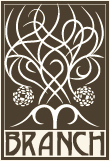 How to Use BRANCH
How to Use BRANCH
This site is constructed so as to provide multiple ways of accessing the content: by using the timeline; by scrolling the list of contributors, by topic clusters, and by way of the carousel of recent and noteworthy articles. One can also search the site using two methods: you can perform a text search using BRANCH’s own internal WordPress search engine or you can search BRANCH through NINES (which provides a yet more precise search of the site with relevant text snippet for each article found with the search term). You can find the two search fields on the BRANCH home page in the right-hand column.
TIMELINE
To scroll the timeline, you can either: 1) click on the timeline and move your mouse to the right or left; users with Multi-Touch mouses can just swipe the mouse while the cursor is over the timeline; 2) you can double-click either on the main band or the lower band of decades; the timeline will jump to the point where you double-clicked.
To search for a specific item, use the filter below the timeline. The ‘highlight’ fields allow you to highlight events on the timeline that include the designated term.
When you reach a date, you can click on any text within the timeline. A bubble will appear with a short description of the event, after which you’ll see a list of articles that address the event, or related events. If the article has a live link, you can click it to reach the article. Articles without a live link have already been peer reviewed and are on the their way but are still undergoing revision and copy-editing.
LIST OF CONTRIBUTORS
You can also look up authors alphabetically. Articles will appear gradually over the next two years. A live link means the article has now been peer reviewed, revised, and copy-edited.
TOPIC CLUSTERS
Topic Clusters will be updated dynamically as new articles are published in BRANCH.
CAROUSEL
The Carousel only includes recent or noteworthy articles.
COURSE USE
Each article has a stable URL (a permalink), making it very easy to incorporate content into course syllabi. Each article also includes a button (right after the title) that, when clicked, generates a PDF of the most current version of the article.
